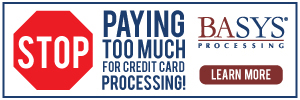 |
||||||||||||
|
||||||||||||
|
Association & Industry News
The American Coal Ash Association (ACAA) reports that the coal ash beneficially used was 58% in 2018, down from 64% in 2017. It estimates that 60 of 102 million metric tons was beneficially reused. Coal ash produced decreased by 9 million tons (8%) compared to 2017. This is the fourth consecutive year that more than half the coal ash produced was beneficially used rather than disposed. Coal ash is a generic term for coal combustion products (CCP) that is beneficially used in a variety of applications. Use of coal fly ash in concrete declined 11 percent to 12.5 million tons. While the need for fly ash is high, regional markets are affected by supply issues associated with closure of coal-fueled power plants. Use of CCP in cement manufacture declined 26 percent to 6.4 million tons. The use of fly ash and bottom ash increased to 4.6 million tons following several years of declining trends. The cement and concrete industries represent the largest users of CCPs. ACAA CCP Production and Use Statistics can be found here. More information can also be found here. The six Developing Industry Leader groups have completed their preliminary research under the auspice of their selected committee, mentors and senior NRMCA staff. Each group will present its findings at its committee’s next meeting. They will also publish their results in NRMCA’s quarterly magazine, Concrete InFocus. Topics are: • Government Affairs Committee: FEMA’S Pre-Disaster Mitigation Grant Program • Promotion Committee, Build With Strength: Purposeful Promoters Program • Promotion Committee, Sustainability: Building Sustainably with C02concrete • Research Engineering & Standards Committee: Minimizing the Impact of Third-Party Testing • Safety, Environmental & Operations Committee: Think First & the Ready Mixed Concrete Industry • Workforce Development Committee: Developing a More Attractive Hourly Work Schedule The annual Developing Industry Leader (DIL) Program provides middle managers the freedom to strategically explore critical issues facing our industry on a national scale. Additionally, the program provides participants networking opportunities, both professionally and socially, with more established executives. Celebrating its 15th anniversary, the DIL program boasts just under 200 alumni. Solicitation for applications for the next DIL cohort will be released in late Spring 2020. Finally, please watch E-NEWS for announcements about future DIL alumni gatherings. For more information, contact Eileen Dickson at edickson@nrmca.org.
Engineering
The Concrete Pavement Technology Center maintains a database on completed and in-progress research activities related transportation infrastructure. Research activities are gathered from several sources, including the Transportation Research Board, newsletters, state agency websites and interaction with state agency personnel. The goal of the Concrete Infrastructure Research Database is to assist agencies and researchers in easily finding what is being investigated throughout the U.S. This aids practitioners in assessing available options for solving their concrete pavement and bridge deck problems, as well as promotes collaboration between researchers sharing similar interests. The database can be accessed here.
The Federal Motor Carrier Safety Administration (FMCSA) has added three more Webinars to its lineup to help educate stakeholders for the upcoming January 6, 2020 requirement for all commercial motor vehicle carriers to be registered with the new FMCSA Drug and Alcohol Clearinghouse. The upcoming Webinars will cover requirements for Clearinghouse Substance Abuse Professionals and Medical Review Officers and Clearinghouse Employers, Consortia/Third-Party Administrators and CDL Drivers. Webinars will now be held on December 5, 10, 13 and 19, and January 22 and 23. Click here for more information on the Clearinghouse, including requirements, factsheets, query pricing schedules, Frequently Asked Questions and more. Click here to access the Webinar registration page. For more information, contact Kevin Walgenbach at kwalgenbach@nrmca.org. SEO
Last week, the White House Office of Management and Budget’s Office of Information and Regulatory Affairs (OIRA) published its updated fall Unified Agenda. The Unified Agenda is the clearinghouse for public access to federal regulatory agencies’ respective regulatory actions, covering 60 departments, agencies and commissions, including EPA, OSHA, FMCSA and the IRS. Also included in the agenda is a section detailing the deregulatory and completed actions the Administration’s agencies have accomplished. Included in the agenda are updates on issues including FMCSA’s Retroreflective Tape and Rear Guard Rule, EPA’s Heavy-Duty Truck Engines and Regulatory Science Transparency Rules, and the NLRB’s Joint-Employer Rule, to name a few. Click here to view the updated regulatory proposals/rules and their timelines and here to review the deregulatory and completed actions list. For more information, contact Kevin Walgenbach at kwalgenbach@nrmca.org. Pavement
In Mid-October, five undergraduate students from the New Jersey Institute of Technology's Concrete Industry Management Program attended the Fall ACI 2018 Conference, competing in the pervious concrete competition. The students (seen here, from left to right, Nikolaos Benyamin, Cindy Hernandez, Meghkumar Vadalia, Angy Grullon and Mohamed Hassan) competed against 51 other teams, both domestic and international, to produce pervious concrete which balances permeability and splitting tensile strength. For this competition, the team benefited from the presence of NRMCA Senior Director, Local Paving, Ken Justice, who took the time to meet the team and guide them in the competition. He suggested that long fibers should be used instead of shorter ones to increase tensile strength and voids in the pervious concrete. To consolidate the concrete, Justice suggested using a proctor hammer (he even suggested ways of making one since the team did not have one). The team made five different mix designs to test the effects of size of fibers, aggregate size, compaction method and using SCM. To find the effects of fibers in pervious concrete the team made two mixes, one with fibers and the other without. The goal was to check if fibers change tensile strength, voids and permeability. After testing mixes four and five, the team learned that the fibers increased the tensile strength and it had nearly no effect on permeability. In mixes two and three, the team compared the effect of fine aggregates and fly ash, concluding that fly Type F had no effect on the mix. Mix One used a different compaction method. The proctor hammer was used to compact the mix in the cylinder every two layers. This made a huge difference in permeability. Using a proctor hammer to compact the mixture was a game changer since it increased the tensile strength while not reducing the permeability. The team also used the same admixture proportions in all its mix designs: 900ml/100kg of Glenium 7500 and 80 ml/100 kg of Delvo. Justice also suggested that the competition should include compressive strength tests. The team was also told that small volume cylinders will act differently compared to actual pavements.
For more information, contact Ken Justice at kjustice@nrmca.org. Calendar
*Please note that e-mail and direct links to each event listed below can be accessed from NRMCA's Web site. December 3, Denver December 3, Webinar December 10, Hagerstown, MD December 10 – 13, Orlando, FL *Sold Out December 17 – 19, Dallas 2020 January 14 – 16, Des Moines, IA January 14 – 16, Nashville, TN January 21 – 24, Cincinnati *Sold Out January 28 – 30, Orlando, FL January 28 – 30, Dallas February 25 – 28, Miami March 7 – 9, Las Vegas March 10 – 14, Las Vegas March 17 – 19, Dallas March 24 – 27, Boston April 28 – May 1, New Orleans September 27 – 29, Aurora, CO December 15 – 18, Phoenix |
||||||||||||












 The team did exceptionally well, placing 7th of the 52 competing teams. In addition to Justice, the team also thanked Dr. Mohamed Mahgoub, CIM director and NJIT ACI advisor.
The team did exceptionally well, placing 7th of the 52 competing teams. In addition to Justice, the team also thanked Dr. Mohamed Mahgoub, CIM director and NJIT ACI advisor.



